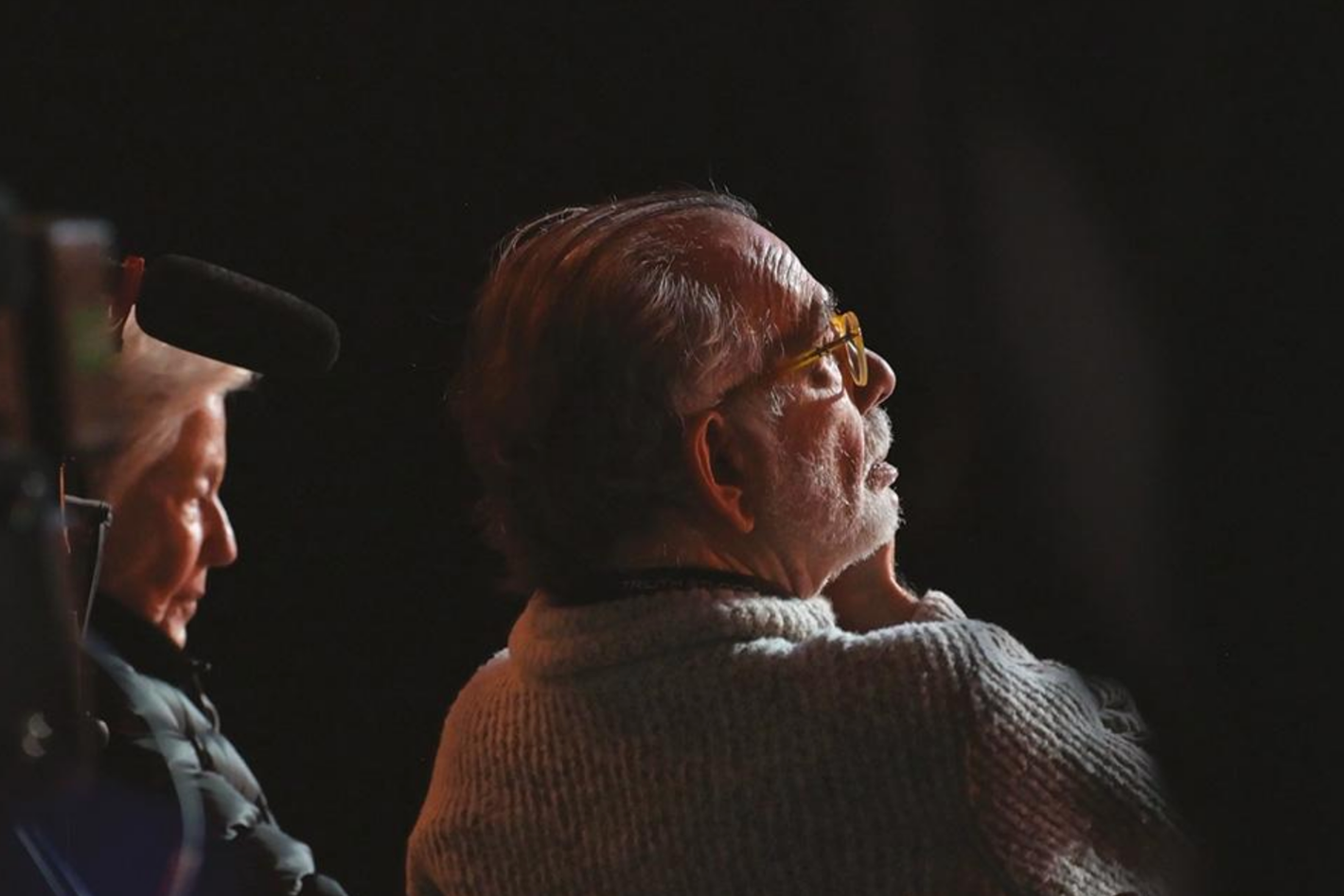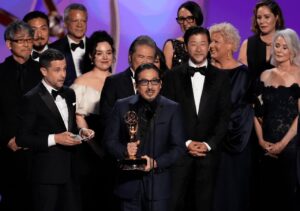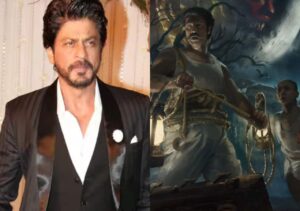
Regardless of whether you think Francis Ford Coppola’s Megalopolis is a great movie, a terrible movie, or some mad hybrid of both, we can all probably agree that the most fascinating thing about the film was its creation. A dream project that Coppola spent decades trying to realize, Megalopolis felt for many years like a defining absence in the director’s career: the masterpiece he never got to make, the one that would tie everything together. And then he made it — with about $120 million of his own money, after 13 years away from the director’s chair. Megalopolis came out last year, got wildly divisive reviews, and made about $10 at the box office. But it also might have been the most-talked-about picture of the year. Is that failure or success? “He likes going through brick walls,” George Lucas, once Coppola’s protégé, says about him in Megadoc, Mike Figgis’s documentary about the making of Megalopolis, which is premiering this week at the Venice International Film Festival ahead of a September theatrical release. “So when he lands on his head, I’m not surprised.”
Coppola would probably say something similar. For a filmmaker once renowned for his grandiosity, the director has always been surprisingly self-deprecating and conflicted in his own assessments of his work. “I’m not just doing something I know how to do,” he says of Megalopolis in Figgis’s documentary, speaking to his late wife, Eleanor. “I’m doing something I don’t know how to do, and I don’t know how that’s gonna work out.” Elsewhere, he calls himself “a first-rate second-rate director.” This strain of vital self-doubt was also widely evident in Hearts of Darkness: A Filmmaker’s Apocalypse (1991) — the immortal documentary about the insane production of Apocalypse Now — directed by Fax Bahr, George Hickenlooper, and Eleanor herself. This is a man who thrives on chaos and disquiet, it seems.
He uses that as a creative force, too. Figgis pretty much had total access during this period, and his demystification of Coppola’s process is valuable. He’s there for the auditions and the experimental acting exercises that Coppola has always loved to do, activities designed to build community. There’s a real “Let’s put on a show” energy to Coppola’s approach to filmmaking, which recalls something he has often said about his life and career — that he was in many ways happiest when he was doing theater back in college. (This is also why he continues to be obsessed with the idea of “live cinema,” a small element of which we got to witness during Megalopolis’s theatrical run, when an actual person in the audience would ask Adam Driver’s onscreen character a question.) Megadoc also provides glimpses of Coppola’s fraught meetings with his art and effects departments, which wound up being replaced partway through the shoot. There’s good chaos and bad chaos, and sometimes even the director doesn’t seem entirely sure of which is which.
Take, for example, his constant give-and-take with actors, particularly Shia LaBeouf, with whom we see Coppola have some of his more contentious face-offs. These provide a kind of spine for the film, as their exchanges range over the course of production from good-natured to dramatic. “You’re the biggest pain in the fucking ass of any actor I’ve ever worked with,” Coppola yells at LaBeouf at one point. At the same time, though, LaBeouf seems to be one of the actors (along with Aubrey Plaza) who have most fully bought into Coppola’s ideas about experimentation. But the actor’s manic energy, his refusal to let go of scenes, clearly drives the filmmaker crazy.
It’s not quite arrogance on LaBeouf’s part. He tells Figgis’s camera that he had participated in a table read for the film five years before production began and that, in the intervening years, his behavior destroyed his life and his public image. “I was beyond persona non grata; I was nuclear,” he admits, noting that he has been going around making amends to people he’s wronged as part of a recovery program. (Among the key people he had to repair his relationship with is fellow Megalopolis actor Jon Voight, who had once been the young actor’s mentor and with whom LaBeouf recalls he once came close to literal blows over politics.) In LaBeouf’s case, a lot of his actions seem to be driven by anxiety. “I have the least job security of anyone here,” he tells Figgis, recalling that Coppola once fired Harvey Keitel from Apocalypse Now after a month of production. When Coppola praises him, LaBeouf asks the director if any of what he’s saying is true.
Figgis also has access to footage of Coppola’s earlier, aborted attempts to make Megalopolis. This includes table reads from 2001 featuring Robert De Niro, Uma Thurman, and Billy Crudup and some 2003 footage of Ryan Gosling playing Clodio, LaBeouf’s character. One can see a level of naturalism in these snippets of Gosling’s performance that hints at a completely different approach to the character. I think LaBeouf is pretty entertaining in the finished film, but one does wonder what it might have looked like with that earlier cast.
In that early footage, we also see Virginia Madsen playing Wow Platinum, the gold-digging newscaster memorably played in the finished movie by Plaza. Again, two completely different performers, two presumably quite different interpretations of a singular role. The uniqueness of Coppola’s approach clearly attracted Plaza to this picture; she seems to thrive on the uncertainty. “This is a nightmare,” she says she told Coppola when she first read the script, but she means it in a good way. One of Coppola’s preferred ways of trying out his actors is to have them say a particular line over and over again with a totally different intonation each time, and we can see Plaza’s eyes lighting up at the opportunity; she embraces the mischief and the lunacy. Watching her throughout Megadoc, it seems as if she has found a kind of happy place. Honestly, she might be the best thing in both films.
Figgis, himself an Oscar nominee and once a major figure in international cinema, is a curious choice to make a movie like this. As he notes himself, he’d never seen another director at work before. At 77, he might not be the household name Coppola is, but over his career he has been no less formally ambitious: This is the man who made 2000’s Timecode, a fiction feature consisting of four intersecting long takes that played simultaneously in a four-way split screen. (He repeated some of those ideas in 2001’s more successful Hotel.) Figgis’s experimental streak isn’t evident in Megadoc; he seems more content to sit back and observe. Maybe that’s because he realizes he doesn’t have to intervene, that what’s happening before his camera is interesting enough.
That fly-on-the-wall approach ensures that, if Megalopolis provoked its share of critical battles, Megadoc will serve as evidence for all sides of the debate. Here, we see Coppola in full: both inspiring and argumentative; at times filled with boyish exuberance and ideas and sometimes just tired and depressed and showing his 84 years of age; an artist who loves to be in the thick of a scene as well as an aloof auteur who often slinks silently away to the Silverfish, the technologically decked-out trailer that has accompanied him to his sets since the early 1980s. “That’s my polio mentality,” Coppola, who suffered from the disease as a child, reflects. “I retreat to the iron lung.” Like the man who made it, Megalopolis is a movie that bears both the qualities and the scars of these conflicts. We probably didn’t need Megadoc to tell us this, but it remains a thoroughly fascinating look at one of the most unlikely films ever made.
A new documentary on the making of Francis Ford Coppola’s Megalopolis provides a fascinating look at one of the unlikeliest films ever made.

































































